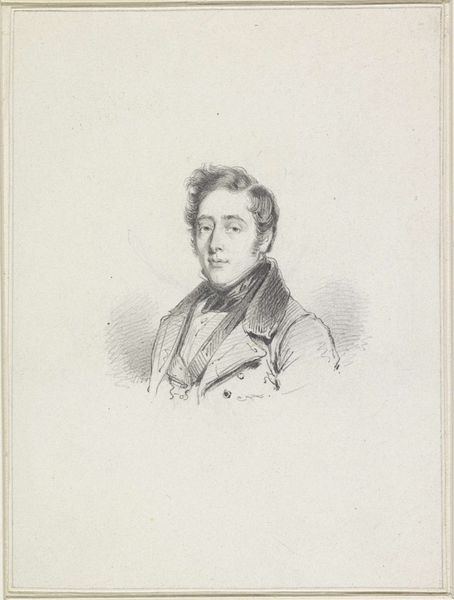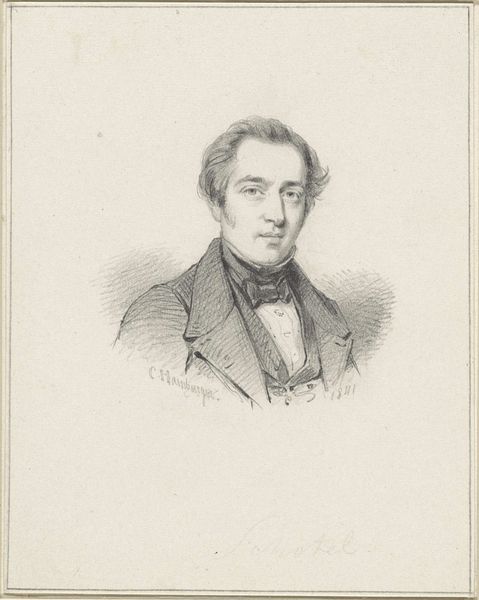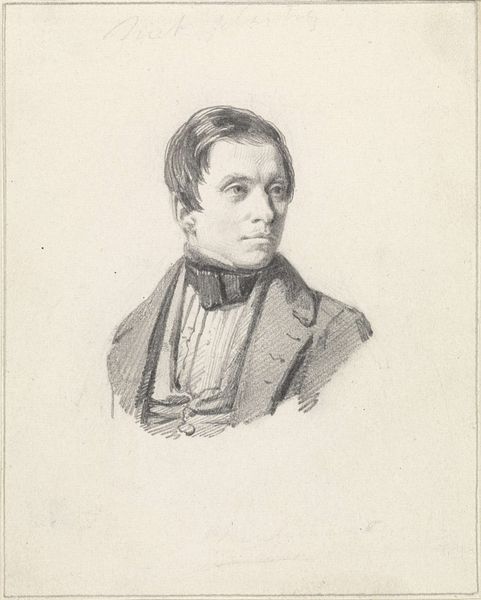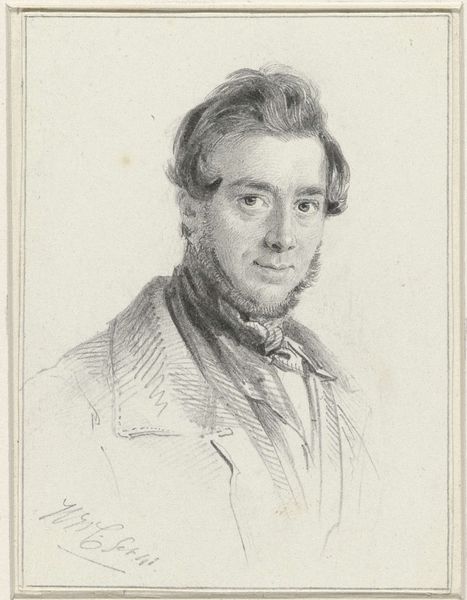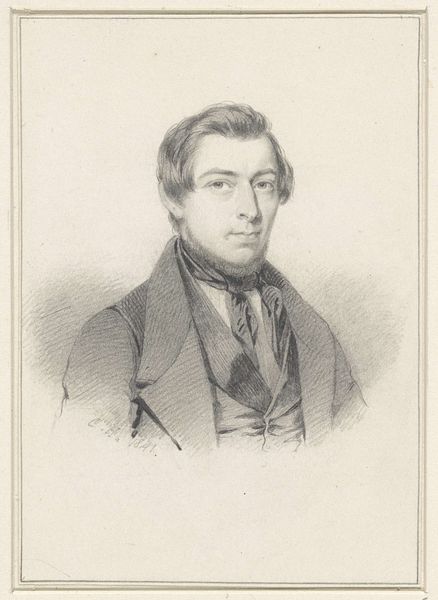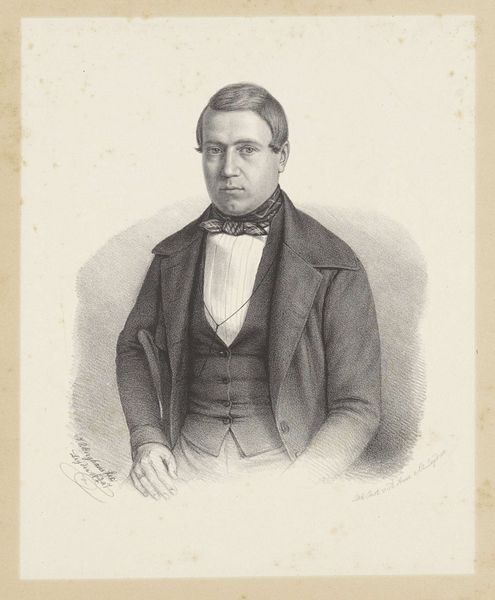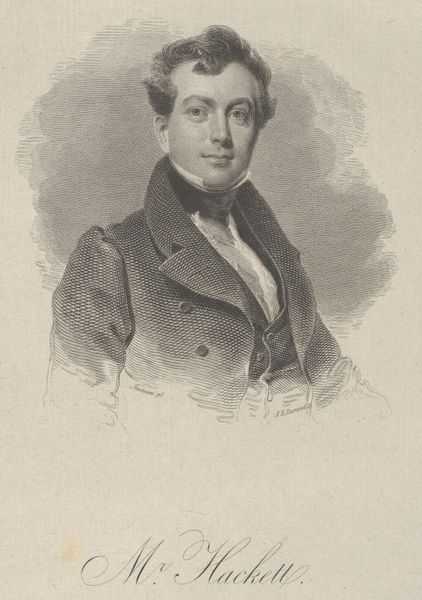
drawing, pencil
#
portrait
#
pencil drawn
#
drawing
#
pencil sketch
#
charcoal drawing
#
pencil drawing
#
romanticism
#
pencil
#
portrait drawing
#
academic-art
Dimensions: height 254 mm, width 198 mm
Copyright: Rijks Museum: Open Domain
Editor: Here we have "Portret van een zittende heer," or Portrait of a Seated Gentleman, rendered in pencil sometime between 1837 and 1839 by George Coutteau. The detail in the face is quite striking, but there’s a formality to the pose that feels very much of its time. What can you tell me about this piece? Curator: Well, given its style and period, the piece clearly operates within the sphere of 19th-century bourgeois portraiture. This was a period of great social upheaval and rising middle classes. Portraits like these weren't just about capturing a likeness, they were assertions of status and respectability. The sitter's clothing, his posture—everything contributes to constructing an image of a respectable member of society. What do you notice about his attire and demeanor? Editor: He’s dressed very formally – suit, waistcoat, bow tie. And he seems carefully composed. It’s interesting to think about the statement that would make at the time. Curator: Precisely. Consider also how portraiture functioned within the art market. Commissions like this provided artists with income but also perpetuated certain social values. Academic art was about skill, yes, but also about reinforcing the existing social hierarchy. This drawing offers us a glimpse into that complex interplay between art, commerce, and social power. To whom was this available and visible? Where may it have resided and who might have viewed this? Editor: That’s fascinating! So it's less about the individual and more about what the portrait *represented* socially? Curator: It’s both. We see the individual, but we also understand the cultural forces shaping that representation. These works really highlight how art is never truly separate from the society that produces and consumes it. I see both romantic and academic art styles, and the commercialization of portraits around this time. This makes me question who the sitter may have been and what was Coutteau’s role as the artist? Editor: I hadn't considered the art market side of it so deeply. Thank you.
Comments
No comments
Be the first to comment and join the conversation on the ultimate creative platform.
